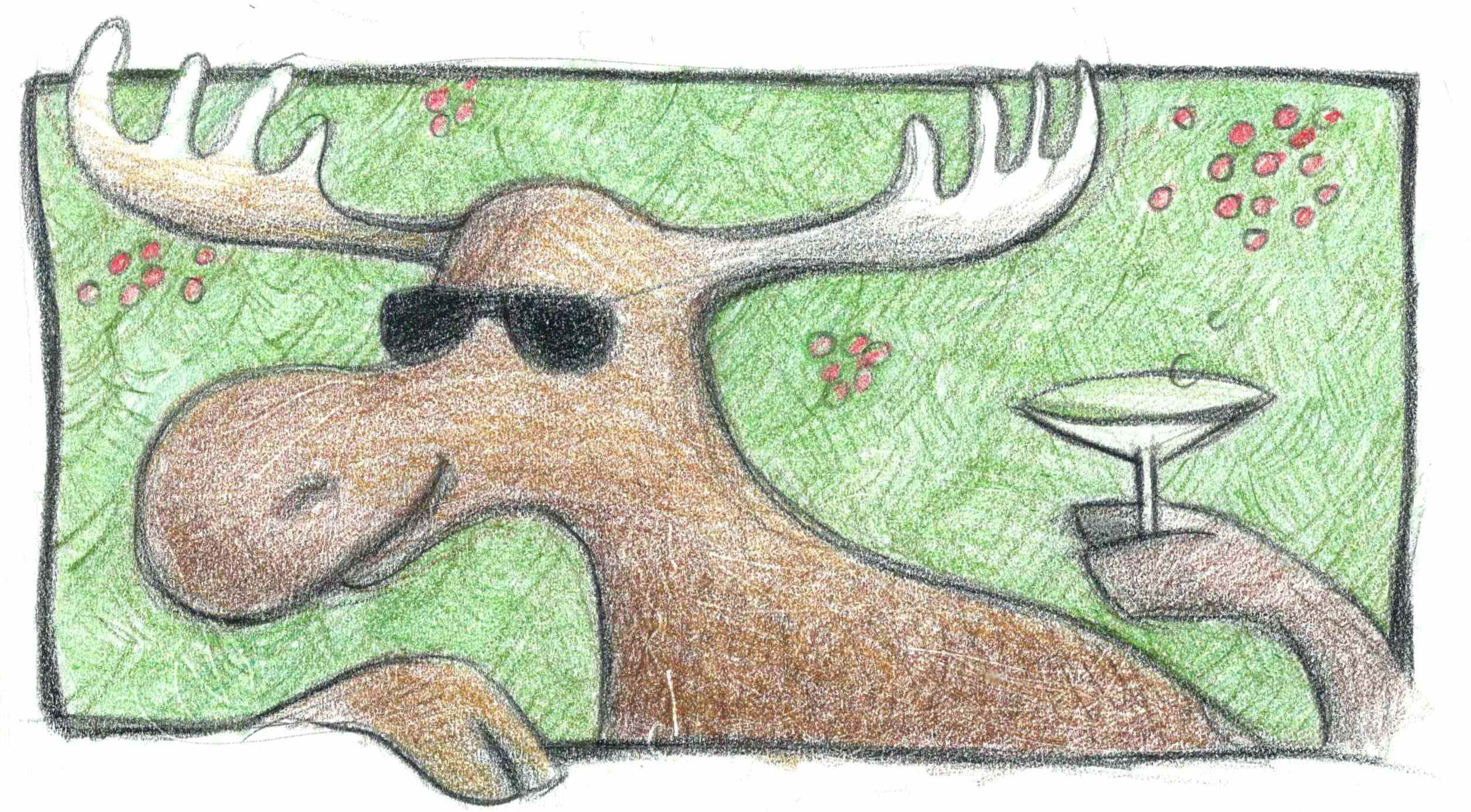Red, ripe berries and fruits, such as those of mountain ash, cranberries, hawthorns, and apples, are a sure sign of a bountiful harvest at the end of summer, but after a few freezes in autumn these fruits can become deadly to wildlife. The cells of the fruits are broken open as ice crystals form, then melt, then form and melt again during cycles of freezing and thawing. The glucose and other sugars they contain are then released to natural populations of yeasts on the fruit surfaces, which ferment the sugars to ethanol, much like what happens to grapes when they are first crushed to make wine.
Quite often in late September or October, after the first hard frost, I’ve seen flocks of cedar waxwings and robins become inebriated after eating mountain ash berries. Recently, there have been several reports of moose that apparently became drunk after eating too many fermented crabapples in Alaska and piles of fermenting apples in Sweden. Birds weigh only a few ounces, so it shouldn’t take much ethanol to make them drunk. Moose, on the other hand, weigh between 500 and 1200 pounds, so it would take a lot of hard cider to get them inebriated. Petter Kjellander, Professor at the Swedish University of Agricultural Sciences, thinks that it is not possible for a moose to eat enough fermented fruit in one sitting to make it drunk. The moose’s rumen can hold only so much fermented apple mash before it must stop eating and chew its cud. This load of fermented apples probably does not contain enough alcohol to induce inebriation in a large moose, and the three hours it takes to empty a moose’s rumen should be sufficient to cleanse its system of the ingested alcohol. On the other hand, perhaps some moose, like some people, are genetically disposed to an intolerance of alcohol, and so only a small amount might get them intoxicated. The answer to this problem will likely tell us something new about the physiology of moose.

We have peculiar tastes in foods when we sit at a bar too long – witness the varieties of pickled things in typical bar food. Might a drunken moose also have the same tastes? After the yeasts create the ethanol, bacteria turn some of it into acetic acid, otherwise known as vinegar, so apples, crabapples, and berries become pickled while they ferment. Perhaps the combination of fermented and pickled apples stimulates the moose to keep eating far beyond what is good for it.
Salted nuts, chips, and popcorn are ubiquitous wherever alcohol is served, whether in bars or at a Super Bowl party. Do moose have a craving for salt when eating fermented fruit and if so, where can a moose get it? Gary Belovsky and Peter Jordan found that aquatic plants are a major source of salt for many moose in summer and perhaps in early fall when fruits in the uplands are starting to ferment. But once the ponds freeze in late fall, aquatic plants are no longer available. Then, moose are often seen licking the gravel on the sides of roads, presumably for the salt put down by transportation departments to melt the ice. A drunken moose on the side of the road is potentially a great danger to motorists, so beware if you are driving in moose country during late autumn!
And what should a moose do about the hangover the morning after a fermented fruit binge? We can go to the drugstore and pick up some aspirin, but a moose can go to the original source of this universal painkiller. Aspirin is salicylic acid and was originally isolated from the bark of willow in the genus Salix, from which salicylic acid takes its name. Willow twigs are highly preferred foods of moose from fall to spring. By the end of winter, many willows along streams and in bogs look like someone went at them with a machete, but the many moose tracks in the snow tell us the real culprit. I’ve often thought that moose eat the willow bark to stave off the pain of cold weather or crusty snow slashing their shins raw. Perhaps some of these tracks were also made by moose who became drunk by eating berries of mountain ash along the streambank or fermented cranberries in the bog. If so, then the tracks of a drunken moose should wander erratically, like a drunk stumbling home after the bars close. If I snowshoe through a willow bog this winter, I’ll keep an eye out for tracks that may have been made by a stumbling moose. If there are browsed mountain ash berries nearby, then I may be on the track of a drunken moose coping with a hangover.

